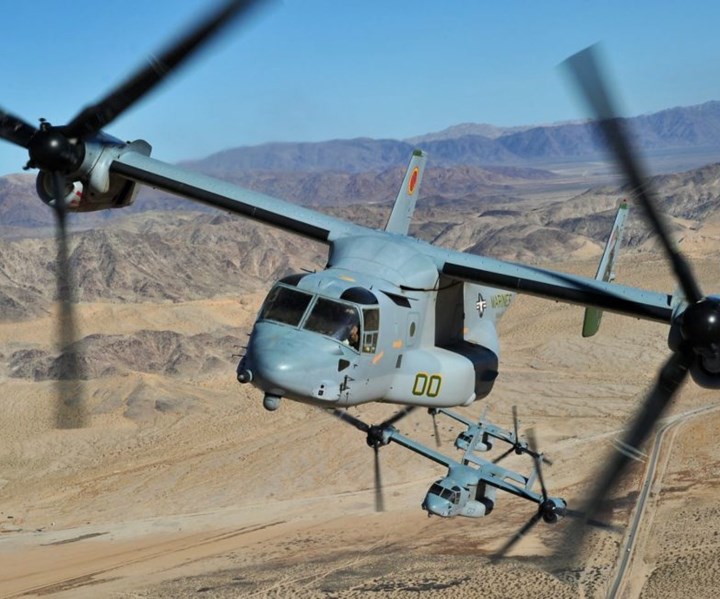Meggitt to supply composite ice protection components for V-22 Osprey
Per a contract with Bell Textron Inc., Meggitt will supply composite de-icing propeller rotor blankets, heated spinners, fairings and pendulums.

Source | Meggitt
Meggitt PLC (Dorset, U.K.), a leading international company specializing in high-performance components and subsystems for the aerospace, defense and selected energy markets, has signed a contract with Bell Textron Inc. (Fort Worth, Tex., U.S.) worth an estimated $73 million to supply composite de-icing propeller rotor blankets, heated spinners, fairings and pendulums to the Bell Boeing V-22 Osprey. The contract is valid for five years.
The V-22 Osprey is a military aircraft platform designed to combine the functionality of a conventional helicopter with the long-range, high-speed cruise performance of a turboprop aircraft. Meggitt’s electro-thermal ice protection components are constructed from composite materials with embedded thermal technology.
Tony Wood, Chief Executive, Meggitt said, “The Osprey is an iconic platform and we are grateful for the trust that Bell has once again placed in Meggitt to provide composite solutions that greatly enhance flight safety, efficiency and performance.”
Meggitt is also a member of the Clean Sky 2 Green Airframe Icing Novel Systems (GAINS) consortium, part of the Airframe ITD (Integrated Technology Demonstrator). GAINS will deliver a complete ice protection solution for business aircraft, including smart hybrid bleed-air and electro-thermal systems for de-ice and anti-ice as well as the novel ultra-low power de-ice system. Work area leaders are Dassault Aviation and Airbus Spain. Exploration includes alternatives for heavy electro-mechanical actuators in explusive systems, which apply impulses to aircraft structures, causing the ice to break away. Research is also being conducted into passive ice protection using advanced ice-phobic surface materials to inhibit ice accretion and promote ice shedding. GAINS started in July 2015 and continues until 2022, with the objective of demonstrating a flightworthy advanced hybrid system and a laboratory demonstration of the novel low-power alternative.
Related Content
-
Milliken & Co. partners with MMI Textiles to offer Tegris thermoplastic
The commercial market partnership enables easier access to the Tegris thermoplastic composite fabric for defense customers in the quantities that they require.
-
From the CW Archives: Airbus A400M cargo door
The inaugural CW From the Archives revisits Sara Black’s 2007 story on out-of-autoclave infusion used to fabricate the massive composite upper cargo door for the Airbus A400M military airlifter.
-
LifePort acquires Aeromatrix Composites advanced materials line
The aircraft manufacturer solidifies its capability to provide next-generation advanced materials solutions to aerospace and defense customers.
















